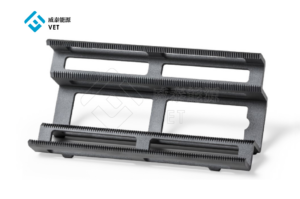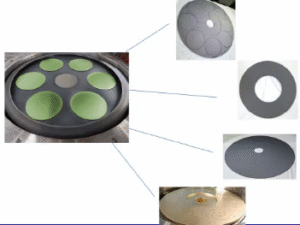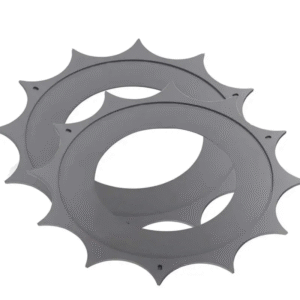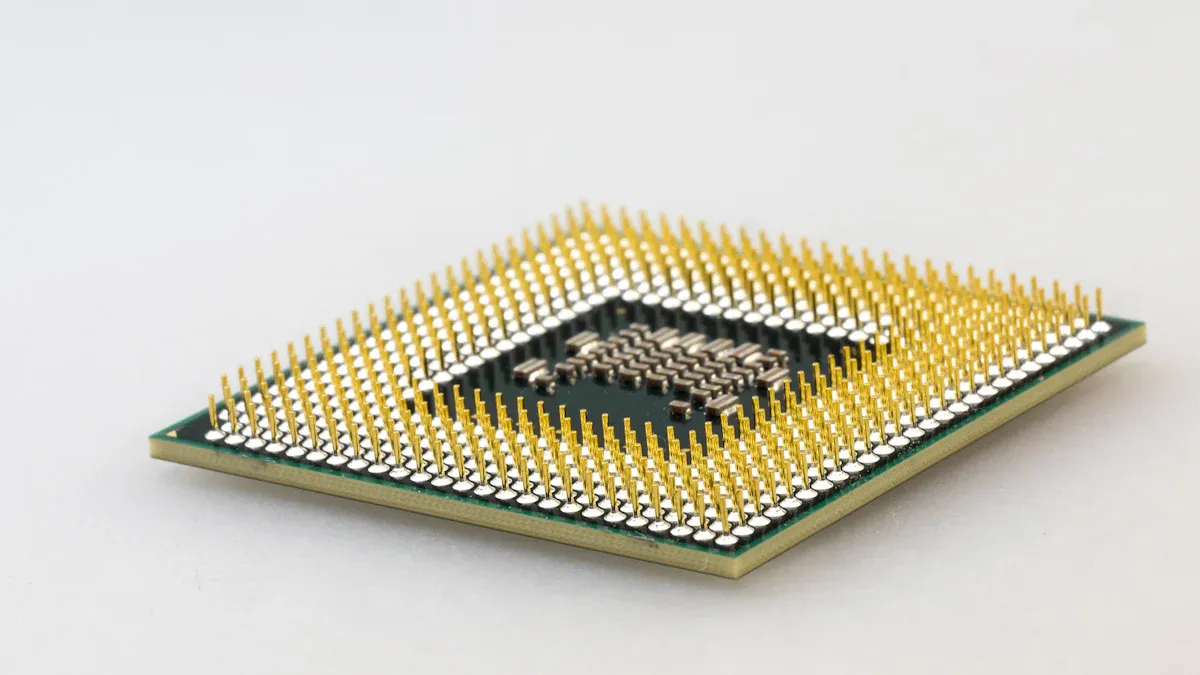
Semiconductor applications form the backbone of modern technology. These tiny yet powerful components enable advancements in wafer processing, epitaxial growth, and power electronics. By revolutionizing how devices operate, they drive innovation in industries ranging from telecommunications to healthcare. Their evolution continues to shape the future, fostering breakthroughs that redefine societal progress.
Key Takeaways
- Semiconductors are key parts of today’s tech, like phones and medical tools.
- Transistors changed electronics, making gadgets smaller and better. They helped create personal computers.
- Silicon Carbide makes 5G faster and better, helping future connections work well.
Key Milestones in the Evolution of Semiconductor Applications

Early breakthroughs: The rectifier and crystal detector
The journey of semiconductor applications began with the invention of the rectifier and crystal detector in the early 20th century. These devices marked the first practical use of semiconductors in electronics. The rectifier, which converts alternating current (AC) to direct current (DC), became a cornerstone for powering early electronic systems. Meanwhile, the crystal detector, a primitive form of a diode, played a pivotal role in early radio receivers by enabling the detection of radio signals. These innovations laid the groundwork for more complex semiconductor technologies, demonstrating the potential of semiconducting materials to revolutionize communication and energy systems.
The invention of the transistor and its transformative impact
The invention of the transistor in 1947 by John Bardeen, Walter Brattain, and William Shockley at Bell Labs marked a turning point in the history of semiconductor applications. This tiny device replaced bulky vacuum tubes, offering a more efficient, reliable, and compact solution for amplifying and switching electronic signals.
“In 1965, Intel co-founder Gordon E. Moore predicted that the number of transistors on an integrated circuit would double every two years, resulting in exponential growth in computing power while reducing the cost of computing by half.”
The transistor’s impact extended beyond electronics. It became the foundation for modern computing, telecommunications, and even space exploration. By enabling the miniaturization of electronic components, the transistor paved the way for portable devices, from radios to smartphones. Its invention also catalyzed the rapid growth of the semiconductor industry, transforming it into a critical driver of technological progress.
The rise of integrated circuits and the first microprocessor
The development of integrated circuits (ICs) in the late 1950s and early 1960s revolutionized semiconductor applications. ICs allowed multiple transistors, resistors, and capacitors to be fabricated on a single chip, drastically reducing the size and cost of electronic devices. This innovation led to the creation of the first microprocessor, the Intel 4004, in 1971.
The Intel 4004 integrated all the functions of a central processing unit (CPU) onto a single chip, enabling the advent of personal computing. Its introduction marked a significant milestone, as it allowed computers to become smaller, more affordable, and accessible to a broader audience. The table below highlights key breakthroughs in semiconductor history and their industrial impact:
| Year | Breakthrough | Impact |
|---|---|---|
| 1960s | Moore’s Law | Predicted exponential gains in processing power, influencing future technology advancements. |
| 1971 | Intel 4004 Microprocessor | First single-chip microprocessor, revolutionizing computing by integrating multiple functions into one chip. |
| 1980s | RISC | Enhanced processing efficiency, leading to faster computing capabilities. |
| 1990s | Superscalar Architectures | Allowed multiple instructions to be processed simultaneously, improving performance. |
| 2000s | Multi-core CPUs | Increased parallel processing, significantly boosting computing speed for modern applications. |
These milestones underscore the transformative power of semiconductor applications. From the invention of the transistor to the rise of integrated circuits, each breakthrough has propelled industries forward, reshaping how society interacts with technology.
Current Semiconductor Applications in Transformative Technologies
IoT and smart devices powered by semiconductors
Semiconductor applications have become integral to the Internet of Things (IoT) ecosystem. These components enable seamless connectivity between smart devices, sensors, and cloud platforms. Microcontrollers and system-on-chip (SoC) designs optimize power consumption and enhance device performance. IoT devices, such as smart thermostats and wearable health trackers, rely on semiconductors to process data efficiently and communicate with other systems.
The proliferation of IoT devices has increased the demand for semiconductors with higher processing capabilities. Companies like Ningbo VET Energy Technology Co., Ltd contribute to this growth by developing advanced semiconductor solutions. Their innovations support IoT applications in industries such as agriculture, logistics, and home automation.
AI, machine learning, and the role of advanced semiconductor materials
Artificial intelligence (AI) and machine learning (ML) depend heavily on semiconductor applications. GPUs and TPUs, designed for parallel processing, accelerate AI computations. Advanced semiconductor materials, such as gallium nitride (GaN), improve energy efficiency and processing speed. These materials enable AI systems to analyze vast datasets and deliver real-time insights.
AI-powered applications, including autonomous vehicles and predictive analytics, benefit from these advancements. Semiconductor innovations also enhance neural network training, making AI systems more accurate and reliable. Ningbo VET Energy Technology Co., Ltd plays a pivotal role in this domain by providing cutting-edge semiconductor technologies tailored for AI applications.
5G networks and the demand for Silicon Carbide (SiC) technology
The rollout of 5G networks has amplified the need for high-performance semiconductors. Silicon Carbide (SiC) technology addresses this demand by offering superior thermal conductivity and power efficiency. SiC-based semiconductors support faster data transmission and lower latency, essential for 5G-enabled devices.
Telecommunications infrastructure, including base stations and antennas, relies on SiC semiconductors to handle high-frequency signals. This technology also supports emerging applications like augmented reality (AR) and virtual reality (VR). Ningbo VET Energy Technology Co., Ltd contributes to the advancement of SiC technology, ensuring reliable and efficient semiconductor solutions for 5G networks.
Future Innovations in Semiconductor Applications
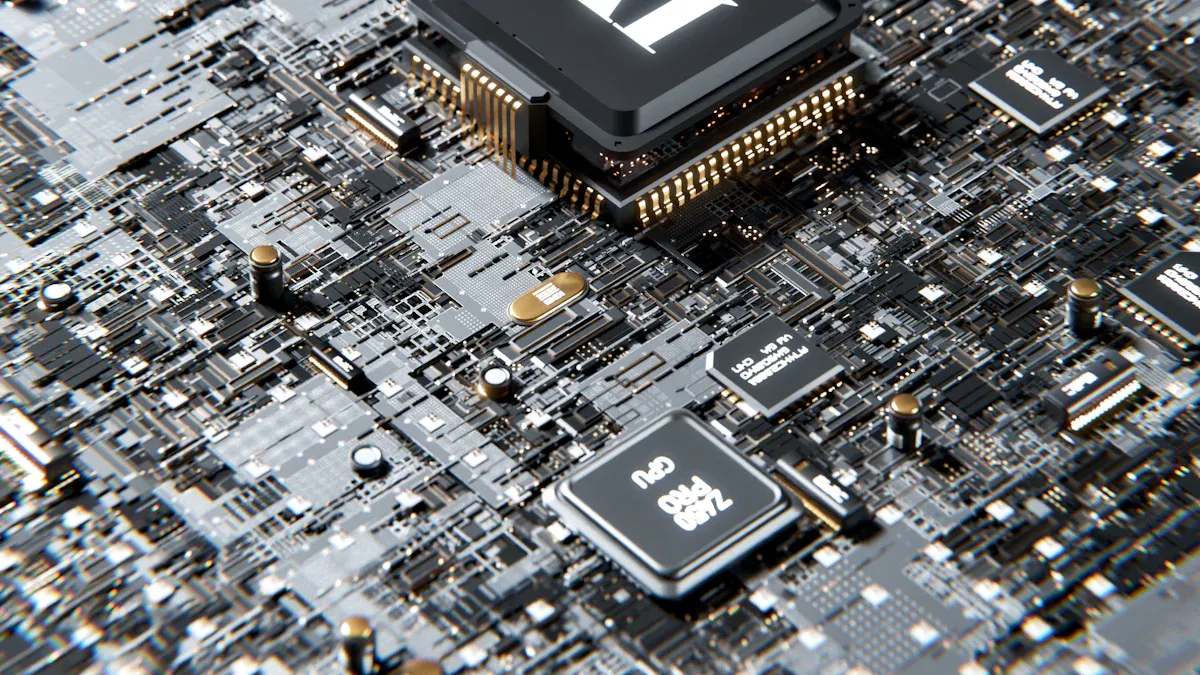
The emergence of Silicon Carbide Ceramic Coating and its benefits
Silicon Carbide Ceramic Coating represents a groundbreaking advancement in semiconductor applications. Its superior physical properties make it ideal for advanced power devices, enabling higher efficiency and durability. This coating finds applications in diverse fields, including MEMS, optical devices, and biomedical devices. Its biocompatibility ensures minimal immune response during chronic implantations, making it a preferred choice for medical technologies.
The coating’s robust chemical resistivity allows it to perform reliably in harsh environments, such as industrial settings or extreme temperatures. Additionally, its excellent thermal conductivity enhances heat dissipation, ensuring optimal performance in high-power applications. Companies like Ningbo VET Energy Technology Co., Ltd are at the forefront of leveraging this innovation to develop cutting-edge solutions for various industries.
Advances in process nodes and their implications for 2025
The evolution of process nodes continues to redefine semiconductor applications. By 2025, advancements in technology nodes will significantly enhance computing power and energy efficiency. The table below highlights measurable improvements across different nodes:
| Technology Node | Improvement in Computing Power | Energy Efficiency | Performance Implications |
|---|---|---|---|
| 7 nm | Significant increase | Higher efficiency | Enhanced device performance |
| 10 nm | Moderate increase | Improved efficiency | Better microcontroller performance |
| 14 nm | Noticeable increase | Energy savings | More compact devices |
| 16 nm | Incremental increase | Energy-efficient | Faster processing speeds |
| 22 nm | Baseline for comparison | Standard efficiency | Established performance metrics |
These advancements will enable the development of smaller, faster, and more energy-efficient devices, driving innovation across industries.
The role of semiconductors in quantum computing and renewable energy
Semiconductors play a pivotal role in the advancement of quantum computing and renewable energy. Quantum computing relies on specialized semiconductor materials to create qubits, the fundamental units of quantum information. These materials enable faster computations and solve complex problems beyond the capabilities of classical computers.
In renewable energy, semiconductors enhance the efficiency of solar panels and energy storage systems. Innovations in semiconductor materials, such as gallium arsenide, improve energy conversion rates, making renewable energy sources more viable. Companies like Ningbo VET Energy Technology Co., Ltd are actively contributing to these advancements, ensuring a sustainable and technologically advanced future.
The Impact of Semiconductor Advancements on Industries and Society
Transformations in healthcare through AI-driven diagnostics
Semiconductor applications have revolutionized healthcare by enabling AI-driven diagnostics. Advanced chips power AI algorithms that analyze medical data with exceptional speed and accuracy. These systems identify patterns in imaging scans, blood tests, and genetic data, offering early detection of diseases like cancer and cardiovascular conditions.
Healthcare providers benefit from semiconductor-powered devices that streamline diagnostic workflows. Portable imaging systems equipped with high-performance semiconductors allow real-time analysis in remote areas. AI-driven diagnostic tools reduce human error, improving patient outcomes and optimizing treatment plans. Companies like Ningbo VET Energy Technology Co., Ltd contribute to this transformation by developing semiconductor solutions tailored for medical applications.
The automotive industry’s shift to electric and autonomous vehicles
Semiconductor advancements drive the automotive industry’s transition to electric and autonomous vehicles. High-efficiency chips manage the complex systems within electric vehicles (EVs), including battery management, powertrain control, and regenerative braking. These components enhance energy efficiency and extend vehicle range, addressing critical challenges in EV adoption.
Autonomous vehicles rely on semiconductors to process data from sensors, cameras, and LiDAR systems. These chips enable real-time decision-making, ensuring safe navigation and collision avoidance. Semiconductor applications also support vehicle-to-everything (V2X) communication, facilitating seamless interaction between vehicles and infrastructure. Ningbo VET Energy Technology Co., Ltd plays a pivotal role in advancing semiconductor technologies for the automotive sector, driving innovation in EVs and autonomous systems.
Consumer electronics and the push for more efficient devices
The demand for efficient consumer electronics has surged, fueled by advancements in semiconductor applications. Modern chips optimize power consumption in smartphones, laptops, and wearable devices, extending battery life and enhancing performance. Compact designs and improved thermal management allow manufacturers to create thinner, lighter devices without compromising functionality.
Semiconductors enable features like high-resolution displays, faster processing speeds, and advanced connectivity options. Smart home devices, such as voice assistants and security cameras, rely on these components for seamless operation. Ningbo VET Energy Technology Co., Ltd contributes to this evolution by delivering cutting-edge semiconductor solutions that meet the growing demands of the consumer electronics market.
Semiconductors have evolved from early rectifiers to powering transformative technologies like AI and 5G. Innovations such as Silicon Carbide Ceramic Coating promise to redefine efficiency and durability in critical applications. By 2025, semiconductors will drive advancements across industries, shaping a sustainable future. Ningbo VET Energy Technology Co., Ltd leads this progress with cutting-edge solutions.
FAQ
What are the key benefits of Silicon Carbide Ceramic Coating in semiconductor applications?
Silicon Carbide Ceramic Coating enhances durability, thermal conductivity, and chemical resistance, making it ideal for high-power devices and harsh environments.
How do semiconductors contribute to advancements in renewable energy?
Semiconductors improve solar panel efficiency and energy storage systems, enabling better energy conversion rates and supporting sustainable energy solutions.
Why is Ningbo VET Energy Technology Co., Ltd significant in semiconductor innovation?
Ningbo VET Energy Technology Co., Ltd develops cutting-edge semiconductor solutions, driving advancements in IoT, AI, and renewable energy applications.


